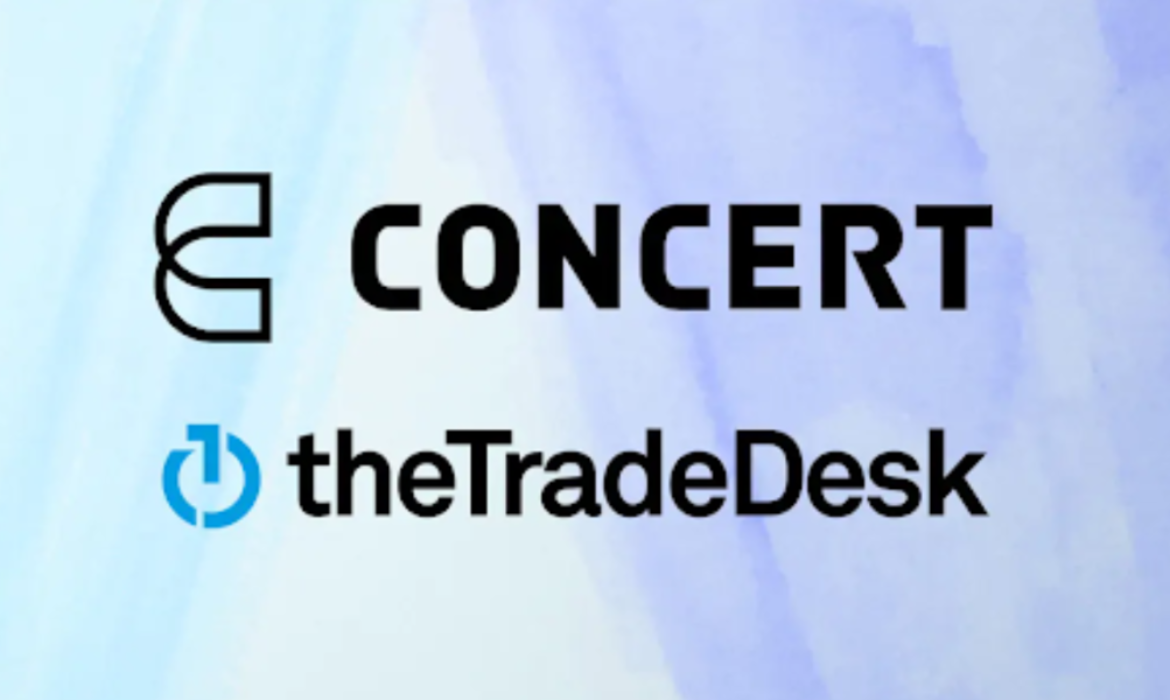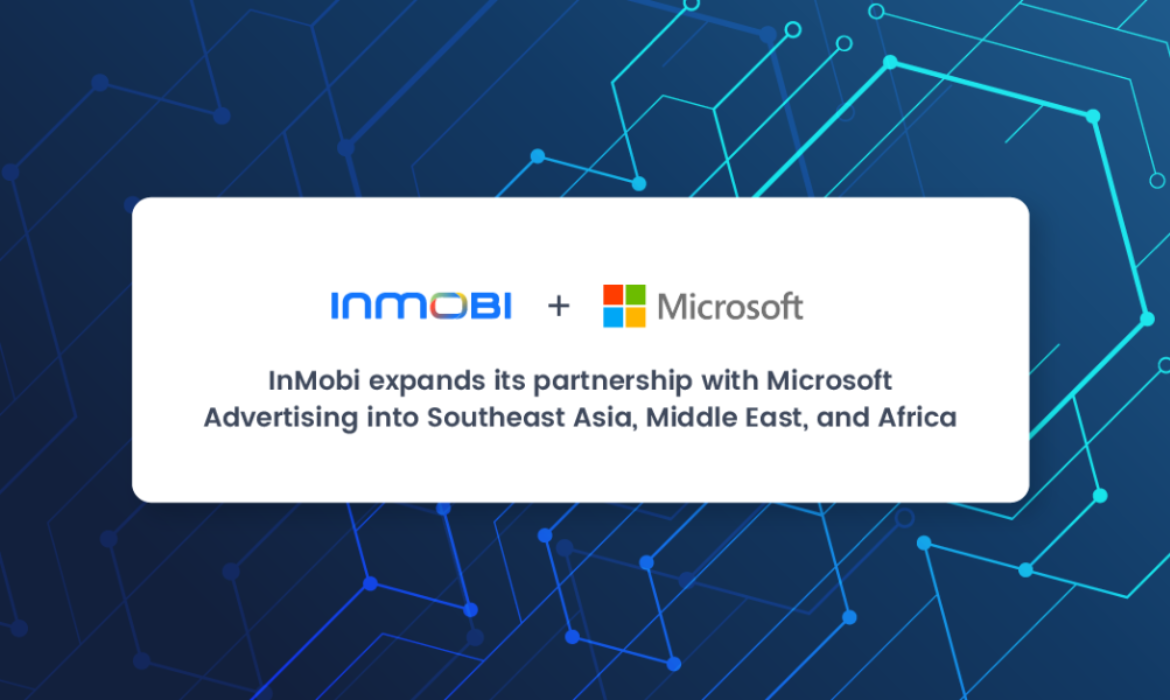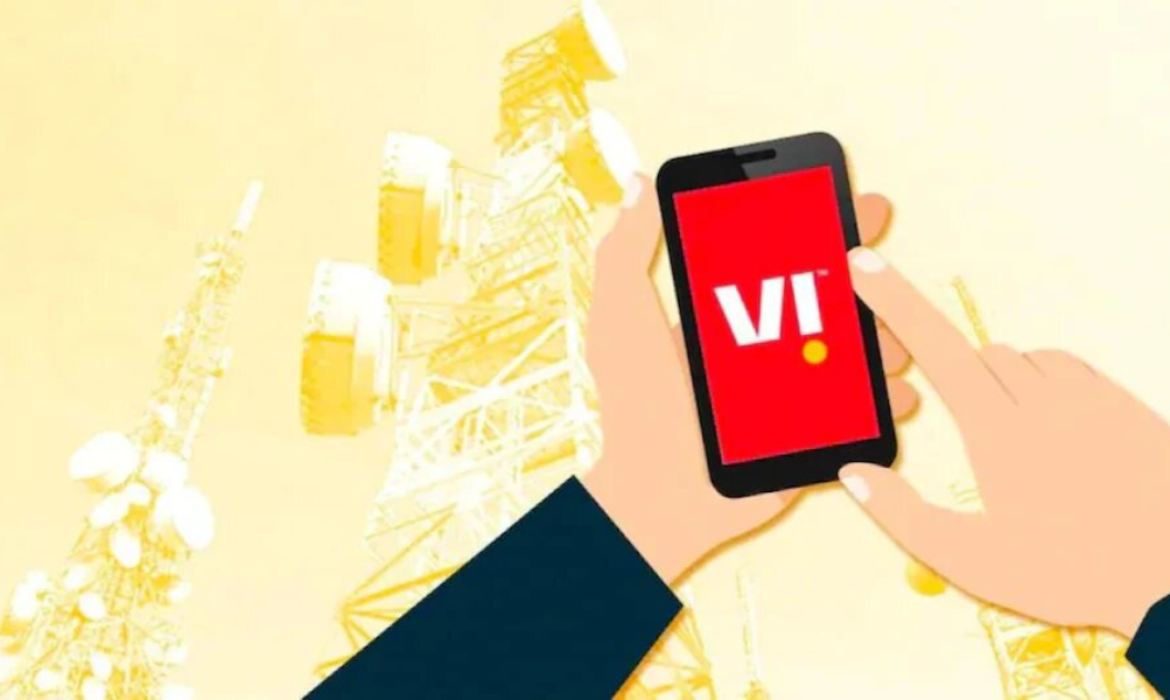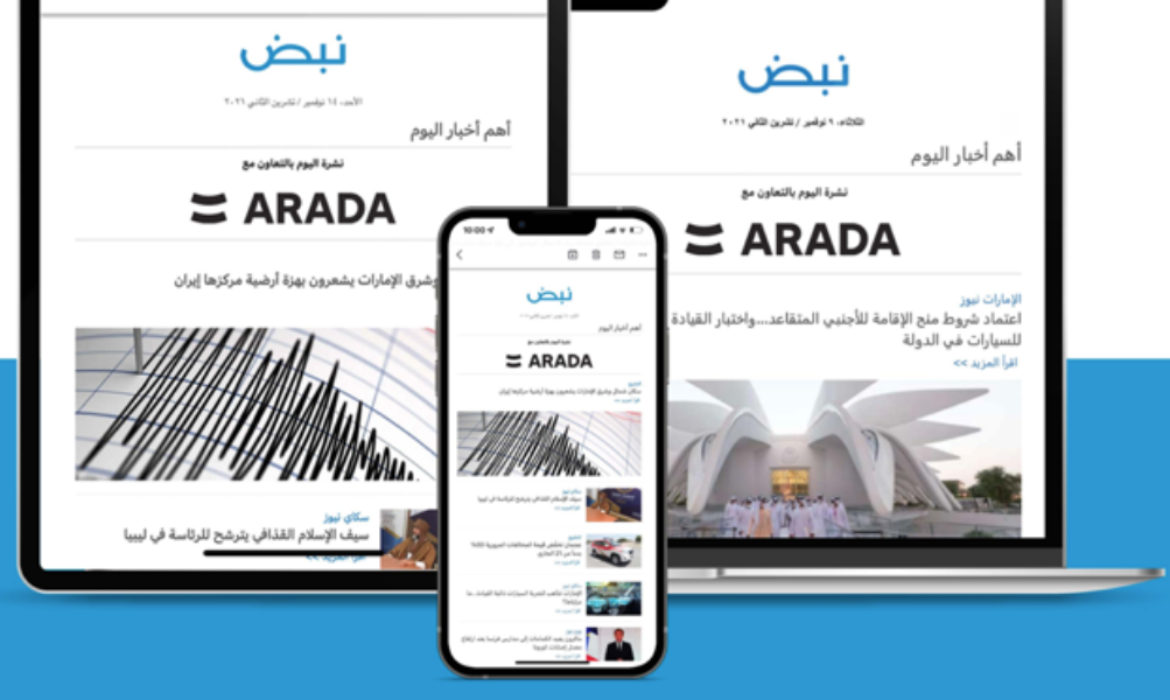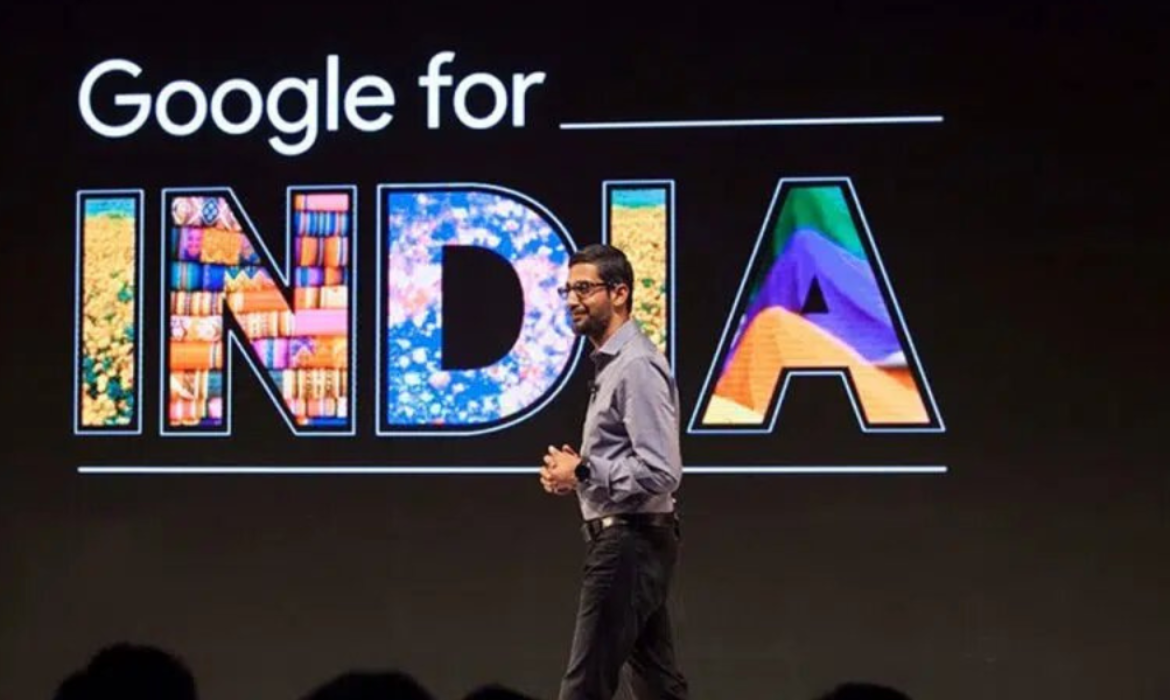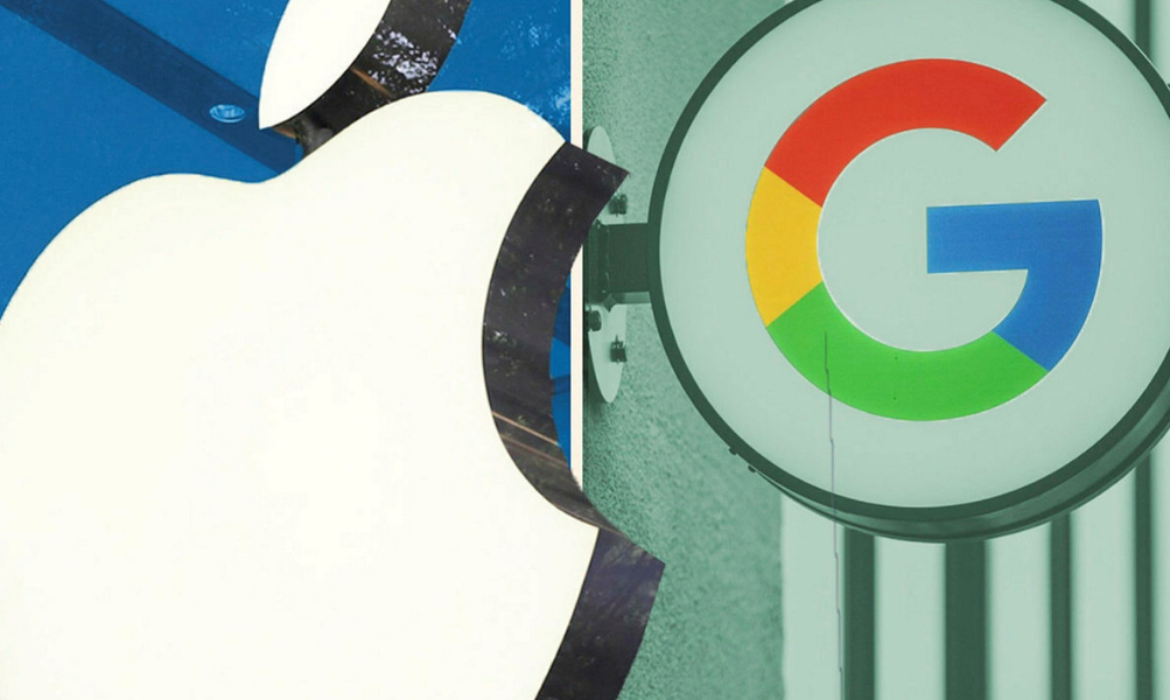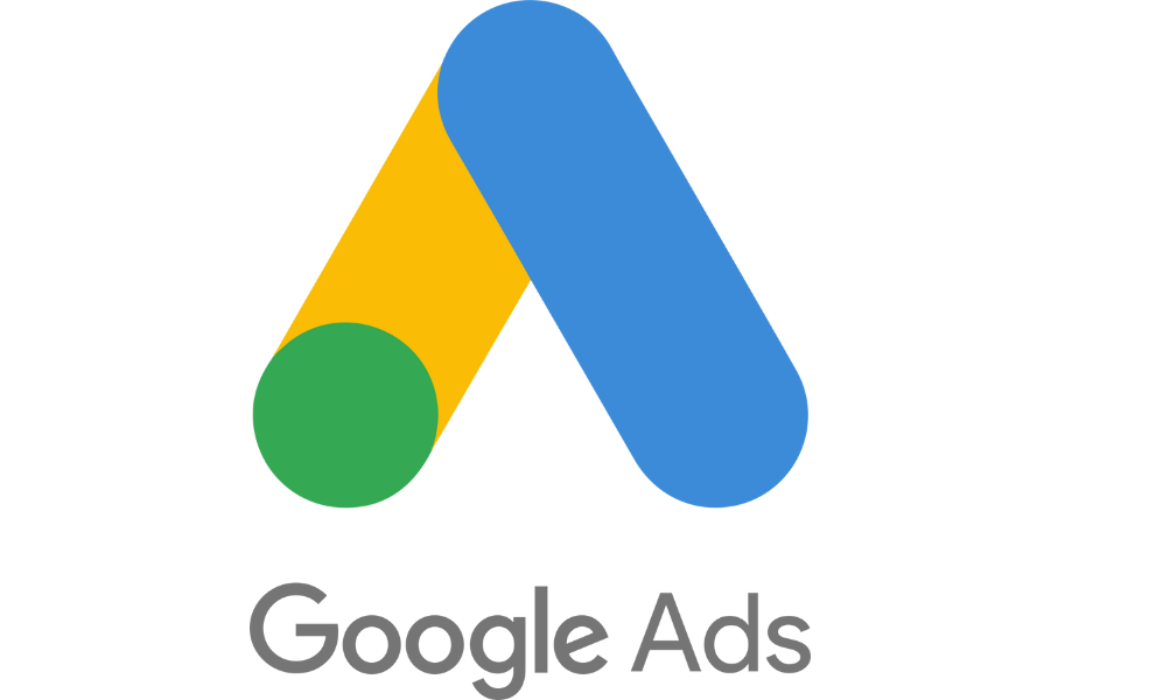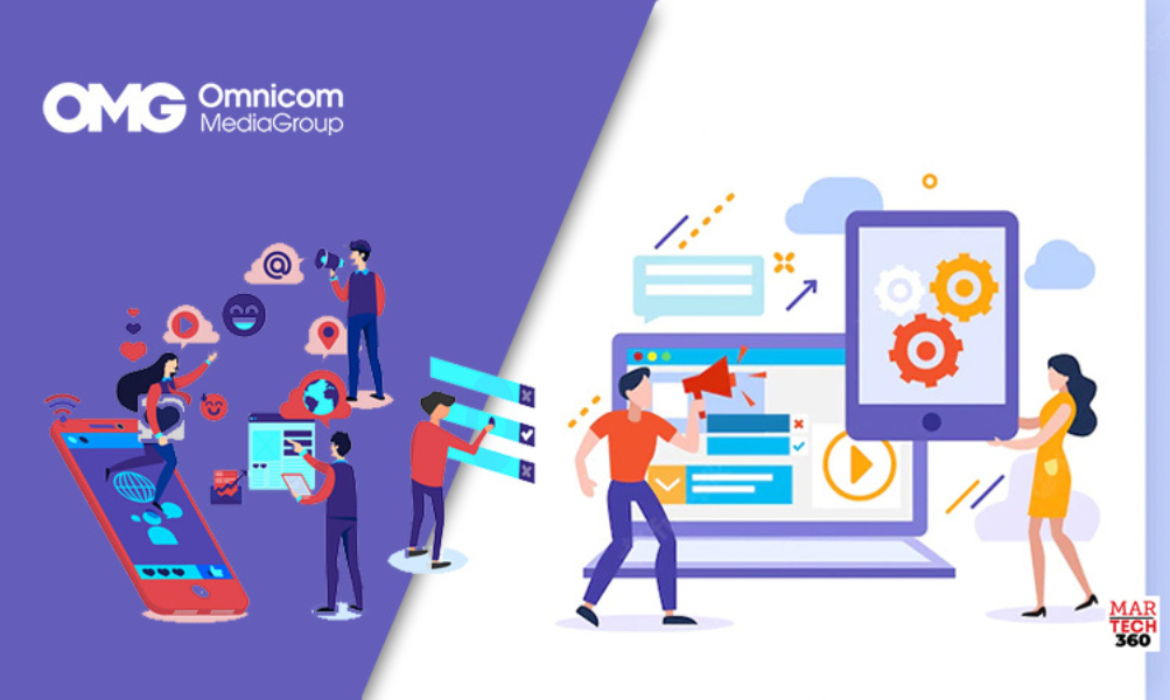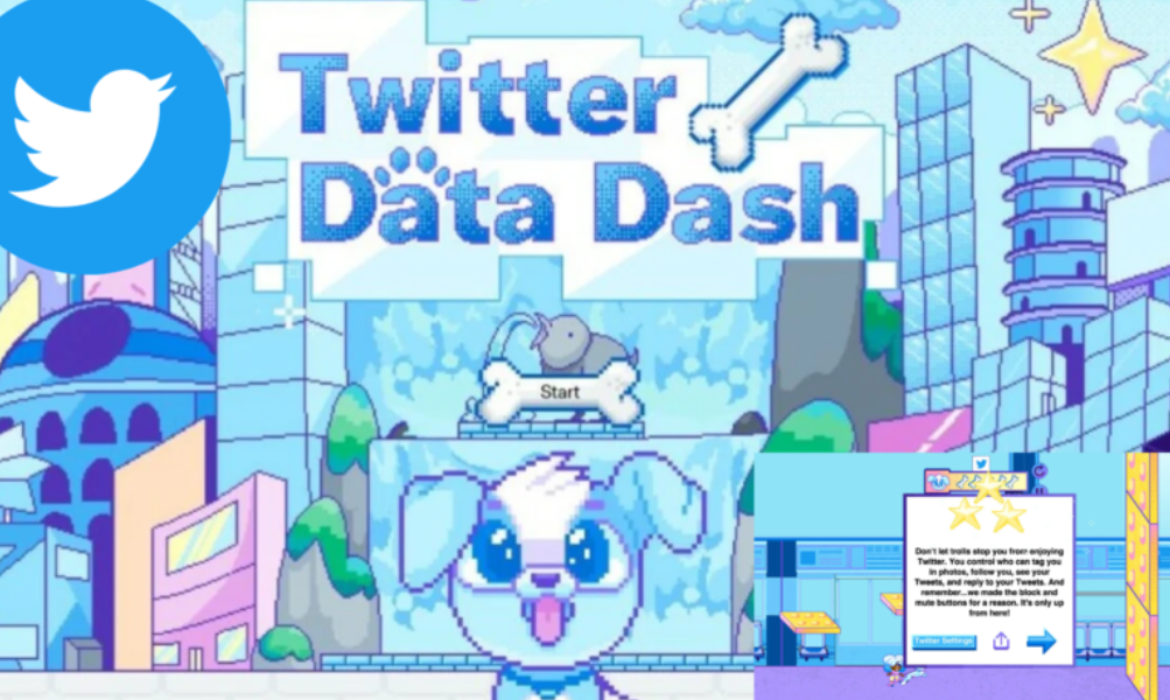Vox Media Launches Own Concert SSP With The Trade Desk As An Exclusive Partner
Vox Media announced its own supply-side platform (SSP) for Concert, the company’s publisher-led marketplace, where the Trade Desk is also its exclusive demand-side platform (DSP) partner. With the launch of its own SSP, Concert will be easier than ever for programmatic buyers to deliver high-value brand advertising in brand-safe environments, driving efficiency and performance across the web’s most trusted marketplace.
Vox Media’s first-party data solution, Forte, will integrate the Trade Desk’s cookie alternative Unified ID 2.0 within the new SSP for attribution and targeting. This ensures Concert SSP campaigns can be evaluated holistically alongside other publishers. The SSP will give advertisers the ability to directly access and leverage the proprietary high-impact ad unit, Athena, across Vox Media’s editorial brands like Group Nine, The Verge, New York Magazine as well as from the premium publishers that make up the national and local ad marketplace, Concert. AJ Frucci, SVP of Media Revenue and Head of Concert at Vox Media said,
“Since launching in 2016, Concert has remained singularly focused on making it easy for brands to advertise across premium publishers effectively and with confidence, by delivering creative excellence, reach, relevance, performance, and trust. The Concert SSP delivers on this mission for programmatic buyers by providing a more direct and standardized path for activating Concert through automated channels.”
Interesting Read: AdTech Vs MarTech: Let’s Settle This Once For All!
Is Vox Media walking a tightrope?
It’s not just playing around with programmatic advertising. The company’s moving to cut out ad tech vendors that take fees only to impede the process of programmatic advertising. As part of its launch, it’s creating its own supply-side platform – something ad tech publishers use to maximize the value of impressions, but don’t own.
Concert has had a programmatic offering, but its primary focus has been managed services until now. The company also said it’s strengthening its role in the programmatic space with hopes of making it a larger share of its business. As quoted by Digiday, AJ Frucci said,
“Owning our technology allows us to be masters of our domain. Having a non-standard ad product that’s reliant on third-party technologies always puts our own product roadmap at risk.”
Recently, government bodies slammed tech giants like Google and Apple for misconduct on the part of their DSPs and SSPs as well as data misuse. Vox Media, however, believes it has an edge in the space where its SSP will offer a “more direct path” between the marketplace and the advertisers as most, if not all, of the ecosystem, is owned by third-party ad tech middlemen built to commoditize scale.
The Concert SSP will enhance the buying experience for programmatic advertisers, improving performance and efficiency. The SSP offers increased viewability controls, as well as a significant increase in access to scale across Concert’s marketplace, allowing advertisers to reach a broader set of their desired audience in one place.
Meanwhile, the Trade Desk Publisher Inventory Development Will Dorothy commented that brands will have the benefits of scale and efficiency that come with programmatic buying, while safely leveraging valuable first-party data anchored in Unified ID 2.0.
“Our partnership with Vox Media will provide advertisers access to premium content in a way that hasn’t been done before across Concert’s entire portfolio of trusted publishers, through the Concert SSP.”
Interesting Read: 5 Ad Industry Trends That Are Likely To Unveil in 2022!
InMobi, Microsoft Advertising Extends Partnership Into SEA, Middle East, And Africa
Adtech provider InMobi has announced an expansion of its partnership with Microsoft Advertising to support enterprise and strategic advertisers in new regions including Southeast Asia, Turkey, the Middle East, and Africa.
InMobi will offer marketers an integrated solution to ramp up their campaigns built on the search and native display capabilities of Microsoft Advertising and the mobile ad tech capability of InMobi’s advertising platforms.
Interesting Read: Is Microsoft Reinventing Its Ad Business With Massive Acquisitions?
Microsoft and InMobi have been working together since July 2018 to help enterprises accelerate their digital transformation through insights, audiences, and engagement platforms. Continuing the partnership in 2019, InMobi added Microsoft Advertising products and solutions to its offering in India. Microsoft Advertising offers solutions that reach people across Microsoft properties, including Bing, Microsoft News, Edge, and Outlook, as well as on partner sites like AOL and Yahoo.
In the past 2.5 years, InMobi and Microsoft have shared a successful partnership in establishing an Indian footprint. With a 1.8X growth in India business since 2019, Microsoft Advertising’s APAC vice-president, Nick Seckold, said,
“InMobi’s successful track record in India has led Microsoft Advertising to extend its coverage across Southeast Asia, where it will be tasked with building close relationships with advertisers and agencies to grow the business in the region.”
Microsoft Advertising’s EMEA and LATAM vice-president Mark Richardson also commented that InMobi will expand its representation of Microsoft’s full suite of advertising offerings to strategic and enterprise clients in West Asia, Turkey, and Africa.
Rohit Dosi, General Manager, Microsoft Advertising business at InMobi, will take up additional responsibilities in the newly expanded regions and also said,
“The extended partnership between Microsoft Advertising and InMobi will enable marketers to deliver a unified brand experience to customers by bringing together the best of search and native display platforms across both organizations. We are positioned uniquely to bring Microsoft Advertising to marketers in Southeast Asia, the Middle East, and Africa through our deep appreciation of marketers’ needs, a keen understanding of the markets, and a customer-obsessed team.”
InMobi will be responsible for the sales, account management, marketing, finance, collection, and billing for Microsoft Advertising customers, managed by InMobi, in India, SEA, and MEA from now onwards. Direct billing with InMobi is designed to provide advertisers with an easy and hassle-free advertising experience as they leverage InMobi’s services.
Interesting Read: InMobi And Anzu Partners To Bring Programmatic In-Game Ads To APAC Region
Another threat to the duopoly: How is Vodafone Idea foraying into the adtech industry?
Vodafone Idea has launched its ad-tech platform called Vi Ads, driven by artificial intelligence (AI) and machine learning (ML), to give marketers an ROI-focused programmatic media buying platform. The telecom operator rolled out Vi Ads with the aim of participating as a major player in the multibillion-dollar Indian ad tech industry.
How will Vi Ads benefit?
It is a self-serve interface that helps marketers set up campaigns, track them, derive personalized insight, and enable targeted outreach. Vi Ads is built to achieve full-funnel campaign objectives from awareness to purchase.
Banking on Vi’s deep data science technology, Vi Ads will enable marketers to engage with the operator’s over 243 million subscribers through multiple channels like Vi-owned digital media — Vi App, Vi Movies, and TV App, and traditional channels like SMS, and IVR calls. The company highlighted the below aspects that distinguish Vi ads:
1. It offers precision targeting not only on the company’s digital assets but also on external third-party programmatic media.
2. It will not be media-specific and enable marketers to engage with Vi users on external media channels and publisher partners of Vi Ads.
3. Marketers can benefit from unique audience segments, interest groups, and targeting parameters derived from Vi’s deep consumer insights built on opt-in consumer data.
Avneesh Khosla, chief marketing officer, Vi said,
“With our programmatic platform – Vi Ads, we will address two of the biggest challenges faced by marketers today – authentic insights and enhanced reach.”
He further added,
“This is a simple, easy to use, and highly efficient solution for marketers to effectively reach out to the right target group with the most relevant messaging at any given point of time, while also providing a monetization opportunity to Vi as we aggressively build and scale our digital assets.”
Interesting Read: Is Google Joining The ONDC Bandwagon With Paytm And PhonePe In The Race?
Vi Ads collaboration
Vi Ads is developed in collaboration with TorcAi, a provider of audience infrastructure and programmatic solutions. It leverages advanced data sciences & machine learning to weave together legacy marketing and advertising technology platforms with new-breed tech. Rohit Verma, CEO TorcAi Digital said,
“This partnership, and the development of the Vi Ads platform, will enable Vi to connect their vast stores of customer insights with advertisers, and publishers, to deliver the right message, at the perfect time.”
Is the entry of telecom operators a threat to the duopoly in the digital advertising market?
In the fast-growing Indian digital advertising market, telecom operators Bharti Airtel, Jio, and Vodafone Idea have launched their own platforms to compete with tech and eCommerce giants like Google, Meta, Amazon, and Flipkart.
The combined revenue of Google and Meta grew to Rs 23,000 crore in FY21 whereas Amazon India and Flipkart generated cumulative advertising revenue of Rs 3900 crore. Digital advertising is sure to undergo a major change as the telcos are going all out to make advertising an additional revenue stream.
In early 2021, telecom provider Bharti Airtel launched its Adtech platform- Airtel Ads and Reliance Jio launched its JioAds later in the year. The three largest telecom operators have a huge opportunity in the digital ecosystem as they collectively own 1.16 billion users and have access to such vast data reserves. As Google plans to phase out third-party cookies by the end of 2023, they are best positioned to take advantage of the fact that they have access to authentic first-party data.
In the case of Airtel, brands can access its 350 million+ customers through various digital platforms via Airtel Ads. It also acquired a strategic stake in the startup Aqilliz to integrate the latter’s advanced blockchain technologies across its fast-growing offerings in Adtech, Digital Entertainment, and Digital Marketplace.
Similarly, JioAds offers advertisers access to reach 450 million+ users through online and offline media assets. The JioAds ecosystem offerings spread across Connectivity, Entertainment, and Commerce. A major selling point for advertisers of JioAds is its brand-safe omnichannel network.
A first-party platform is ideally suited for addressing the question of trust and privacy in digital advertising. Ad tech has seen significant growth and innovation in India due to the digital revolution, which has also led to a higher volume of investments in the industry. The Indian market will be interesting to see if the new entrants can overtake the duopoly and eCommerce companies.
Interesting Read: How Will Partnership With Criteo Benefit Flipkart’s AdTech Business?
Nabd launches Personalized Email Newsletters Powered By AI and ML Algorithms
Nabd, a leading personalized Arabic Content platform launched a new Personalized Email Newsletter product. It will provide opted-in subscribers a daily news digest tailored to their interests, autonomously curated via sophisticated AI and machine-learning algorithms. Content will be delivered to them by email – one of the most effective distribution methods available today.
Interesting Read: How Will Dubai’s Metaverse Sector Contribute To Its Economy By 2030?
Strong subscriber base
Nabd reaches over 25 million users, generating over 2 billion page views every month, making it the biggest Arabic app globally. The Daily Email Newsletter has already been opted in by over 5 million subscribers during the beta and alpha phases. Aso, Nabd’s digital properties such as its mobile apps and web portal attract thousands of new subscribers every day.

Image Credit: Zawya
How do the AI and MI Algorithms work?
Advanced AI and machine-learning algorithms analyze massive volumes of content in real time, including news articles and videos. Afterward, based on geolocation, interests, past engagement, and consumption patterns, the feature curates the most relevant and trending stories for each individual user.
And That’s What They Said
Mr. Al’a Abukhalaf, VP of Business Development at Nabd commented,
Nabd’s Daily Email Newsletters is one of the powerful tools our partners can leverage to promote and elevate their brand, as it offers an exclusive cutting-edge opportunity for brands to sponsor the daily newsletter, staying top-of-mind across Nabd’s highly-engaged Arabic readers and capturing their attention at the most receptive mindset; while they seek and consume relevant and timely information.
Our opted-in subscribers will on the other hand enjoy a personalized, digestible news summary, playing an important role in increasing the reach and retention of the Nabd platform.
Interesting Read: 6 Data Privacy Trends To Look Out For In 2022!
Is Google Joining The ONDC Bandwagon With Paytm And PhonePe In The Race?
Amazon and Flipkart are a duopoly in India’s e-commerce. The Department for Promotion of Industry and Internal Trade (DPIIT) conceptualized the Open Network for Digital Commerce (ONDC), to democratize digital commerce and move it away from platform-centric models.
Google is reported to be interested in joining the ONDC network in order to expand its reach in India, including search and payments. The rivals of Google Pay, Paytm and PhonePe, have come on board and are working on ways to incorporate the network into their platforms.
According to reports, India’s Open Network for Digital Commerce (ONDC) was soft-launched late last month as the government challenged Amazon and Walmart’s dominance in the fast-growing e-commerce business.
Interesting Read: Google Introduces New Ad Tools, YouTube Short Ads Are Coming
Will Google be able to make a mark in the Indian Ecommerce Industry?
Google has a strong presence in a number of segments, including search, payments, workspace, entertainment, app store hosting, mobile UI, and even hardware. However, not eCommerce per se. Google’s talks follow the success of its payments business because of the government’s initiative for financial transactions, the Unified Payments Interface.
The search giant has been upfront about its desire to work primarily with Indian SMBs (small and medium businesses) and has launched several search and discovery features. A Google spokesperson commented referring to the payment service,
“We remain committed to focus on the enablement of small and medium businesses to leverage digital for deeper discovery and payments capabilities with Google Pay.”
It also has the Google My Business initiative, which offers businesses the ability to profile themselves, launch advertisements, manage their workspaces with G Suite, and accept payments via GPay. Google hardly monetizes its “shopping” tab the right way inspite of its wide global reach. A Google shopping business operates solely as an online listing aggregator. It does not handle any order fulfillment, such as shipping, as do companies like Amazon.
Google is in talks with the Indian authority to connect ONDC but declined to comment. It is yet to determine how it can contribute to the ONDC eCommerce journey but is likely to concentrate on the discovery end of the network.
Interesting Read: An End To A New Beginning: French Websites Ordered To Stop Using Google Analytics
What is ONDC and how does it work?
eCommerce in India is set to reach $200 Bn by 2026 with the rise of digital infrastructure. Also, India is also home to the third largest online shopper base of 140 m. These numbers prove that Indians are gradually inclined toward online shopping and eCommerce is booming.


Image Credit: Economic Times
The government wants to level the playing field for sellers who wish to list their products online by reducing the cost of doing business. ONDC aims at connecting 30 million sellers and 10 million merchants online by August, covering at least 100 cities and towns.
Interesting Read: How Will Partnership With Criteo Benefit Flipkart’s AdTech Business?
Meta Slams Apple Over ATT, Google Hit By Second U.K Anti Trust Investigation
Meta airs grievances over Apple’s market power in the mobile app industry To FTIA.
When the Federal Telecommunications and Information Administration (FTIA) asked what technology companies thought about Apple, Meta enthusiastically responded. Apple’s new tracking prompt has cost Meta billions of dollars and made innovation impossibly hard for them. Meta mostly criticizes Apple throughout 19 pages of comments. Meta, which is itself the target of a federal antitrust suit, paints Apple as a behemoth that restricts its ability to expand. Meta wrote in the letter,
Despite having some of the most popular apps in the world, Meta’s ability to innovate on its products and services and even reach its customers is determined, and in some cases, significantly limited, by the most popular mobile operating systems, such as Apple’s iOS.
Meta also made a connection between Apple’s ad business which witnessed explosive growth and its challenges in the same market. Other relatively smaller tech companies (mostly app developers), and the Coalition for App Fairness, a group that represents companies including Epic Games, Match Group, and Spotify, filed a comment to the NTIA that also criticized Apple’s market power. They have called on Congress and the Biden administration to act against the power of dominant app store companies like Apple and Google.
Whether this branch would take action is unclear, but it will be interesting to see what approach they decide to take against a tech company.
Interesting Read: How Will Dubai’s Metaverse Sector Contribute To Its Economy By 2030?

Image Credit: Tech Crunch
Andrea Coscelli, the CMA’s Chief Executive said,
We’re worried that Google may be using its position in adtech to favor its own services to the detriment of its rivals, of its customers, and ultimately of consumers. Weakening competition in this area could reduce the ad revenues of publishers, who may be forced to compromise the quality of their content to cut costs or put their content behind paywalls. It may also be raising costs for advertisers which are passed on through higher prices for advertised goods and services.
Since the tech giant owns the largest service provider in three key parts of the chain. CMA investigation will examine Google’s dominance in the following parts:
Demand-side platforms (DSP) allow advertisers and media agencies to buy publishers’ available ad space from many sources.
Ad exchanges provide the tech to automate the sale of publishers’ ad inventory via real-time auctions by connecting to multiple DSPs and collecting bids for them.
Publisher ad servers that manage publisher inventory and determine which ad to show based on bids received from exchanges and/or direct deals between publishers and advertisers.
CMA advocates for greater regulatory authority for overseeing anti-competitive behavior from tech giants under the new regulator ‘Digital Markets Unit’. It is expected to be introduced in 2020, with the power to fine tech companies up to 10% of global revenues for breaching new digital rules. However, the government has not given the watchdog the authority to impose such fines.
Andrea Coscelli, the CMA’s Chief Executive-
This would be bad for the millions of people who enjoy access to a wealth of free information online every day. It’s vital that we continue to scrutinize the behavior of the tech firms which loom large over our lives and ensure the best outcomes for people and businesses throughout the UK.
In response, a Google spokesperson said,
We will continue to work with the CMA to answer their questions and share the details on how our systems work.
Interesting Read: AdTech Vs MarTech: Let’s Settle This Once For All!
Google Introduces New Ad Tools, YouTube Short Ads Are Coming
Google has announced numerous new ad tools at its Google Marketing Live event, including new ad options for YouTube Shorts, new layouts for Responsive Display Ads, improved analytics, and new ad testing options.
YouTube Shorts
YouTube has been teasing ads on Shorts since last October, but is now progressively rolling it out worldwide.” Google has integrated Shorts advertising into its Video Action and App campaigns. Brands will be able to connect product feeds to their Shorts promotions and make video ads more shoppable.
This could eventually be integrated into regular Shorts clips, enabling creators to monetize their content better. Although it isn’t available yet, the new display could prove valuable for brands, as Shorts delivers more than 30 billion views daily. As quoted by 9to5Google, the company said,
“This is an exciting milestone for advertisers, and a key step on our road to developing a long-term YouTube Shorts monetization solution for our creators, which we’ll share more about soon.”

Image Credit: Google
Google Discover Feeds
Discover feeds are where people scroll through their favorite personalized content for ideas and inspiration. Though it is a lesser used Google app, the new video ad options could help to connect with users and offer more compelling and engaging ad experiences.

Image Credit: Google
Display & Video 360 ad
Google’s also updating its Display & Video 360 ad options and getting new visual shopping ads.
Advertisers will soon be able to add Connected TV campaigns to reach affinity, in-market, and demographic audiences across YouTube and other ad-supported connected TV apps. On the top-left corner, one can swipe through various images accompanied by various product details, such as prices and ratings. This might include information about loyalty programs.

Image Credit:9to5 Google
3D Models of products from merchants will also appear directly in search results, as Google claims 90% of Americans currently use or would consider using, AR for shopping.
Responsive Search Ads
Later this year, Google will roll out automatically created assets for responsive search ads, which should make ads more relevant.
“If you opt in, Google Ads will automatically create assets for you based on content from your landing pages and existing ads. The system will then display the best-performing combination of automatically created assets, and the assets you provide, to make your ads more relevant. The system will then display the best-performing combination of automatically created assets, and the assets you provide, to make your ads more relevant.”

Image Credit: Google
Mobile-First Layouts For Responsive Display Ads
All-new, mobile-first layouts will allow advertisers to showcase their brand on full-screen portrait ad inventory. In addition, Google is introducing scrollable ads and videos based on the product feed.
Performance Max Campaigns
Performance Max campaigns to help advertisers drive better results across Google’s channels and inventory They include A/B testing, campaign management, support for store sales goals to optimize for in-store sales, new insights, and explanations, including attribution, audience and auction insights, and optimization score and recommendations.
Google Insights
Google’s also adding new personalized trend data to its ad insights page to improve contextual understanding and targeting. They include three new reports- Attribution insights, Budget insights, and Audience insights.
Other New Advertising Features
Conversion Lift Test
Google is also bringing Conversion Lift tests directly in Google Ads and Display & Video 360. It will help to measure incremental conversions based on users and regions, and Search Lift tests will enable you to measure the effectiveness of YouTube campaigns at driving organic traffic to YouTube and Google.
Privacy-safe options for interest-based advertising and remarketing
There will be worldwide testing in Google Ads and Display & Video 360 later this year. These tests will incorporate signals from the new Privacy Sandbox APIs.
Ad Control Center
Earlier this month, Google previewed its Ad Control Center at its I/O Summit. People will be able to pick the types of ads they want to see more or less of and control how their data informs ads they see across YouTube, Search, and Discover.
There are several interesting new additions, but the new Shorts display option is the biggest. Users will be able to expand their reach with the rapidly growing Shorts audience. With the growth of TikTok, short-form video has become highly influential. Brands should take note of these options and work to find ways to make use of them in order to maximize appeal and resonance.
Interesting Read: Bridging The Gap: Is YouTube Unifying Linear And CTV Ad Buying?
How Will Dubai’s Metaverse Sector Contribute To Its Economy By 2030?
The Dubai Ruler Sheikh Mohammed bin Rashid Al Maktoum announced earlier this month that Dubai’s metaverse sector will contribute $4 billion to the emirate’s economy by 2030.
Dubai Crown Prince Sheikh Hamdan bin Mohammed and Sheikh Maktoum bin Mohammed, the Deputy Ruler of Dubai have now directed the formation of a task force to track the latest developments in the digital economy, including technology and metaverse trends. As quoted by Arabian Marketer, Sheikh Hamdan said,
The directives of Sheikh Mohammed bin Rashid to form a higher committee to supervise Dubai’s future technological developments reflect the importance of facing the future with an open mind. The move will help us fully understand reality and explore unique ideas that will shape a brighter future for Dubai and the UAE, maximising future business opportunities.
.@HamdanMohammed, @MaktoumMohammed review vital technology trends in the metaverse and issued directives to form a task force to track the latest developments in the digital economy. #Dubai https://t.co/oY819Rs5MU pic.twitter.com/lVtk79uYLT
— Dubai Media Office (@DXBMediaOffice) May 19, 2022
But what exactly is Metaverse? Metaverse users interact with other users in computer-generated environments such as shops, learning environments, and meeting rooms, among other things, in three-dimensional, hyper-realistic virtual rooms. It combines elements of social media, augmented reality, virtual reality, video games, and other advanced technologies.
Interesting Read: Admix And JGroup Partner To Bring In-Play Advertising To MENA Brands
The Dubai Metaverse Strategy
Dubai is capable of attracting and retaining the largest technology companies in the world. Hence, Dubai Metaverse Strategy’s higher committee plans to utilize metaverse technology. This will enhance resident surgeons’ performance by 230%.and raise the output of engineers by 30%. It also aims to raise the metaverse’s contribution to one per cent of the emirate’s GDP.
During the meeting with Sheikh Hamdan and Sheikh Maktoum, Omar bin Sultan Al Olama, who is the UAE Minister of State for Artificial Intelligence, Digital Economy, and Teleworking Applications and chairman of the Dubai Chamber of Digital Economy, outlined how Dubai stands to benefit from the metaverse in a way that enables it to generate business opportunities beyond its physical borders.
Further, it is implementing activities and projects that will increase its web presence. The higher committee is actively examining opportunities and challenges. It is trying to qualify human capital so that it can excel in the virtual environment.
Moreover, it’s constantly working to establish a legal framework that addresses the needs of all sectors in the future. Forecasts indicate that business revenues from the metaverse will increase from $180 billion to $400 billion by 2025.
Interesting Read: Bloomberg Media Studios Unveils First Creative Hub In The UAE
Dubai’s metaverse regulatory authorities
Dubai’s Virtual Assets Regulatory Authority (VARA) established its Metaverse HQ earlier this month, making it the first regulator with a presence in the emerging digital space.
Dubai plans to create a prototype of a decentralized regulator model by expanding VARA’s resources beyond borders. Moreover, it intends to make it readily accessible to government and industry leaders, other authorities, and virtual asset providers to shape the future of the digital economy.
VARA’s MetaHQ will utilize The Sandbox platform, an Ethereum blockchain-based application that allows users to create, sell and purchase digital assets.
Interesting Read: OSN Rebrands Its Streaming Service With OSN+
Omnicom Media Group Debuts Video Creative Intel For Advertisers
Omnicom Media Group’s data and analytics division, Annalect, has launched Video Creative Intel. It would allow an advertiser to determine whether including a human would enhance a creative asset The Video Creative Intel helps marketers identify which creatives are most effective before they launch campaigns.
How exactly does Video Creative Intel help?
Retailers, for example, need to advertise a new promotion in a short timeframe and ensure their creative hits the mark with target audiences. Nevertheless, it does not have the time to carry out qualitative research and does not have the money to run ads that don’t work. Annalect’s Video Creative Intel tool, developed by Omnicom Group’s data and analytics division, will be leveraged. Annalect’s machine learning and artificial intelligence tool draw on data from its proprietary datasets, Google’s data, and the client’s own metrics. The chief experience officer of Analect, Clarissa Season told Adweek,
“As pieces of creative are running in the market, you can start to understand when a piece of creative is starting to wear out when you need to change the creative video.”
As reported by Adweek, Annalect has tested the tool with seasonal retailers and entertainment clients. Using the tool, clients found the need for their branding and moreover include both audio and visual. Another finding was to introduce humans earlier in the creative. A partnership with Google provides Annalect with access to Google’s creative intelligence data, which is an important component of these data insights.
Interesting Read: Connected TV Explained: The Essential Glossary Of CTV
In partnership with Google
The current insights are based on the performance of video assets on YouTube. In addition, Annalect is testing the tool’s predictive capability for non-video digital assets A pilot test has already proven that the tool can be used to showcase creative works on connected TVs.
Annalect’s new tool is different from many other holding companies’ predictive ad tech tools because it focuses on optimizing creative, instead of media formats. Jay Pattisall, principal analyst at Forrester told Adweek,
“The audience-first approach to using data to create audiences was something not being used inside the creative agencies. In the last two years, they’ve worked very hard in terms of catching up in data maturity and data literacy to media counterparts.”
The Video Creative Intel platform puts together data from Omnicom and Google to provide a broader view of the market than other Adtech-based creative services available. This can be a huge advantage for advertisers who utilize their dollars more effectively.
Interesting Read: AVOD strategy For Netflix Ahead: Should Advertisers Rejoice?
Twitter Level Up Its Privacy Policy, Turns It Into A Web Game
Twitter launched Twitter Data Dash, a browser game in Super Nintendo style that summarizes Twitter’s privacy policies. Its purpose is to teach people about the information that Twitter collects, how that information is used and what control users have over that information.

Image Credit: Campaign Middle East
The social media giant says the game is designed to help users learn how to “safely navigate the Twitterverse.” The company said in a statement,
Through Twitter Data Dash, we hope to encourage more people around the world to take charge of their personal information on our service and maybe even have a little fun in the process. Transparency is core to our approach and we want to help you understand the information we collect, how it’s used, and the controls at your disposal.
Interesting Read: New Video Game Measurement Allows Brands To Evaluate The Impact Of The In-Game Ads
While marketing its revised Privacy Policy, the company wanted to take a different approach to make users understand it in a simple manner. In addition, Twitter reorganized the policy into three major categories: data collection, data use, and data sharing.
So what’s different? We’ve emphasized clear language and moved away from legal jargon.
Beginning today, you can see the updates to our privacy policy and terms of service in the app via settings and on our redesigned privacy policy site.
— Safety (@Safety) May 11, 2022
As of last week, Elon Musk had announced he would be pausing his $45 billion purchase of Twitter, after discovering some accounts on the site were fake. Despite the buzz surrounding the Musk deal, it remains to be seen if this vintage side-scrolling video game will excite the users and serve its purpose.
Interesting Read: 6 Data Privacy Trends To Look Out For In 2022!

